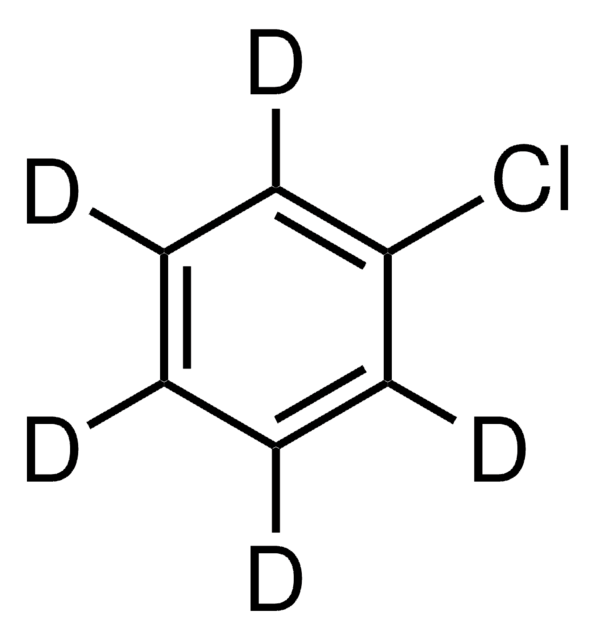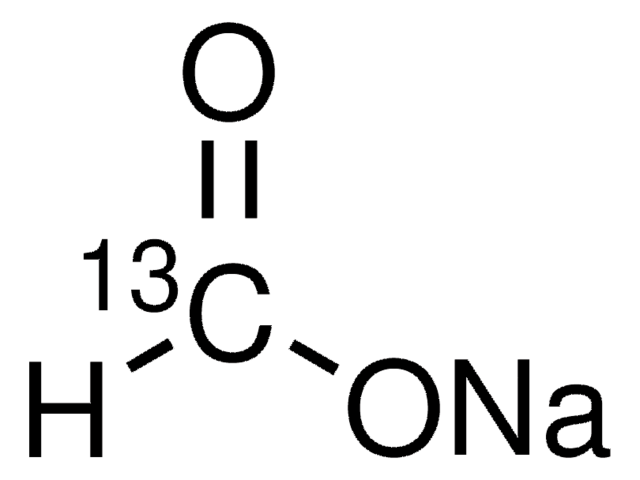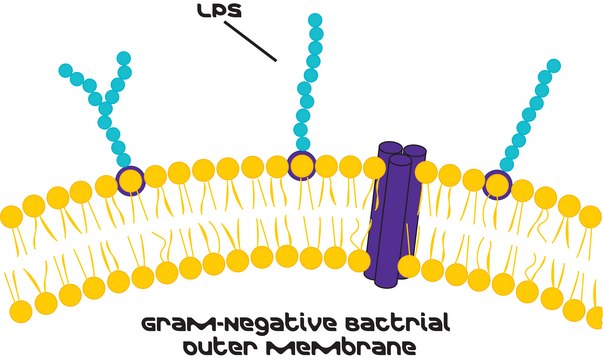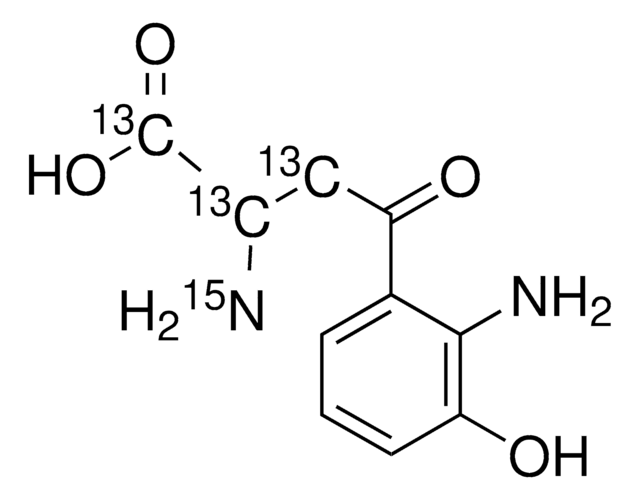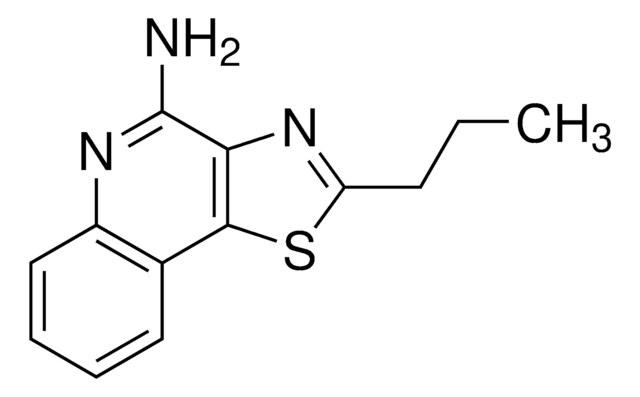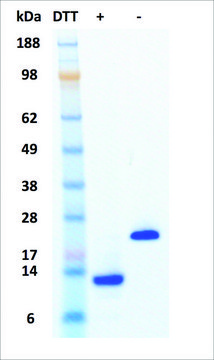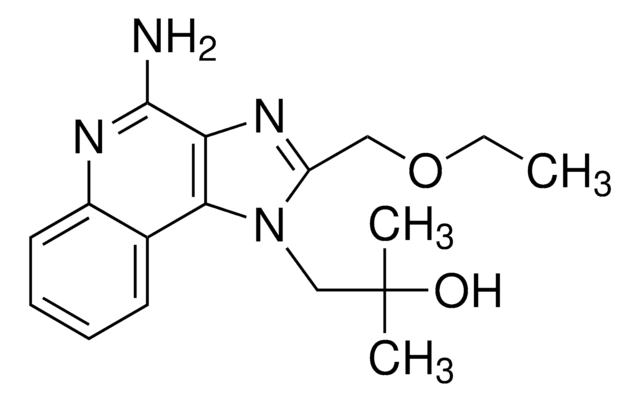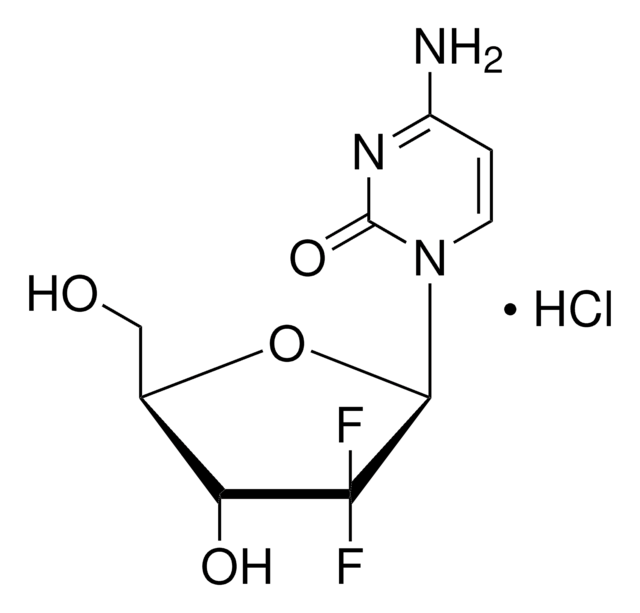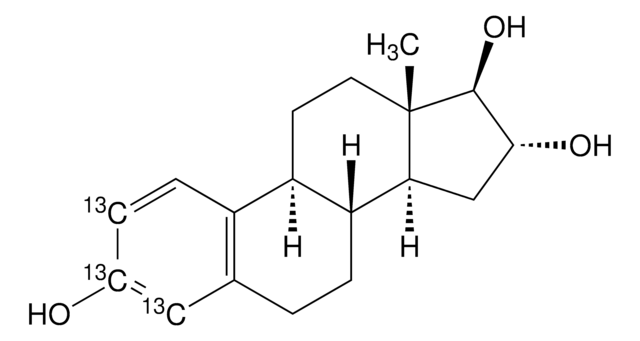496812
7-Allyl-7,8-dihydro-8-oxoguanosine
95%
Synonym(s):
Loxoribine
Sign Into View Organizational & Contract Pricing
All Photos(1)
About This Item
Empirical Formula (Hill Notation):
C13H17N5O6
CAS Number:
Molecular Weight:
339.30
MDL number:
UNSPSC Code:
41106305
PubChem Substance ID:
NACRES:
NA.22
Recommended Products
Quality Level
Assay
95%
optical activity
[α]21/D −32°, c = 1 in H2O
mp
227-230 °C (lit.)
SMILES string
NC1=NC2=C(N(CC=C)C(=O)N2[C@@H]3O[C@H](CO)[C@@H](O)[C@H]3O)C(=O)N1
InChI
1S/C13H17N5O6/c1-2-3-17-6-9(15-12(14)16-10(6)22)18(13(17)23)11-8(21)7(20)5(4-19)24-11/h2,5,7-8,11,19-21H,1,3-4H2,(H3,14,15,16,22)/t5-,7-,8-,11-/m1/s1
InChI key
VDCRFBBZFHHYGT-IOSLPCCCSA-N
Looking for similar products? Visit Product Comparison Guide
Application
Loxoribine is a selective toll-like receptor 7 (TLR7) agonist that activates immune cells and increases cytokine production.
Storage Class Code
11 - Combustible Solids
WGK
WGK 3
Flash Point(F)
Not applicable
Flash Point(C)
Not applicable
Personal Protective Equipment
dust mask type N95 (US), Eyeshields, Gloves
Choose from one of the most recent versions:
Already Own This Product?
Find documentation for the products that you have recently purchased in the Document Library.
Yusuke Murakami et al.
Scientific reports, 7, 44042-44042 (2017-03-08)
Toll-like Receptor 9 (TLR9) is an innate immune receptor recognizing microbial DNA. TLR9 is also activated by self-derived DNA, such as mitochondrial DNA, in a variety of inflammatory diseases. We show here that TLR9 activation in vivo is controlled by
Marjorie Robbins et al.
Molecular therapy : the journal of the American Society of Gene Therapy, 15(9), 1663-1669 (2007-06-21)
RNA molecules such as single-stranded RNA (ssRNA) and small interfering RNA (siRNA) duplexes induce Toll-like receptor (TLR)-mediated immune stimulation after intracellular delivery. We have previously shown that selective incorporation of 2'-O-methyl (2'OMe) residues into siRNA abrogates cytokine production without reduction
Mouldy Sioud et al.
European journal of immunology, 37(10), 2834-2846 (2007-09-14)
We recently reported that human bone marrow hematopoietic CD34(+) progenitors express functional Toll-like receptors (TLR) and can differentiate into myeloid cells just by stimulation with resiquimod (R848), a specific agonist for TLR7/8. However, the mechanisms by which R848 induces cell
Saradiya Chatterjee et al.
Cancer research, 74(18), 5008-5018 (2014-07-31)
Toll-like receptors (TLR) recognize pathogen molecules and danger-associated signals that stimulate inflammatory processes. TLRs have been studied mainly in antigen-presenting cells, where they exert important immune regulatory functions, but they are also expressed by epithelial tumor cells, where they have
Kristie A Jenkins et al.
Developmental and comparative immunology, 33(5), 660-667 (2008-12-23)
Although Toll-like receptors (TLRs) have been well characterised in mammals, less work has been carried out in non-mammalian species, such as chickens. In this study the response of chicken cells to the TLR9 subfamily of ligands was characterised in vitro
Our team of scientists has experience in all areas of research including Life Science, Material Science, Chemical Synthesis, Chromatography, Analytical and many others.
Contact Technical Service
